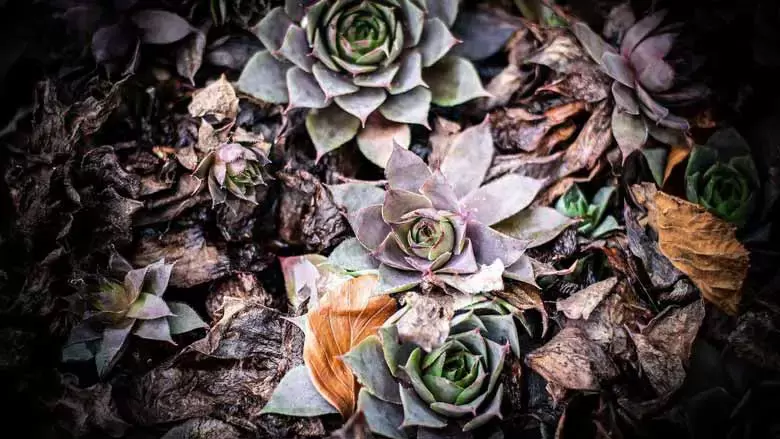|
image from gardenwhisper.com Good morning. The temperature at 10:00 AM is at 23 degrees and only a high of 37 low of 27 degrees. Cloudy now, but the forecast says for sunny. We will see. Back to winter coats, but I say this is ok. More seasonable weather spring will come with in the right time of the calendar.
Personally, I am glad I didn’t take down the plastic walls because it was too warm and even too hot to work. Now the plastic walls are keeping the heat in 1/3 of the greenhouse we are heating and the plants are happier. Speaking of plants, we have lots of the plug tray here so planting will really continue and start. More hours at the greenhouse and less in the house and in the office. I do love this and take what gets done, gets done and it will come. I had a question about dying succulents. Here is what I found out. Why Is My Succulent Dying? By ALEXANDRA JONES Succulents are known for being hardy, low-maintenance plants, but that doesn't make them indestructible. Any succulent—including aloe, jade, echeveria, and haworthia—can be damaged or killed by improper care, the wrong conditions, or pest problems. Knowing how to identify and treat the issue can revive the plant before it's too late. If you're wondering why your succulents are dying, there's still hope. Once you diagnose the reason, you can use these tips to treat the problem and save your succulents. Here are six ways to save a dying succulent, plus steps for identifying the issue. Why Your Succulents Are Dying Before you can revive a dying succulent, you need to diagnose the problem. Overwatering, root rot, too much or not enough light, and pest infestations can all damage or kill succulents. First, examine the plant closely for pests. Look for signs that indicate scale (flat brown spots and sticky honeydew), mealybugs (white cottony masses), webbing (spider mites), or fungus gnats (small insects on or hovering around the soil surface). You'll also want to check out the leaves and stems. Soft, squishy leaves that may appear translucent and mushy, discolored stems are signs of overwatering. Leaves that are shriveled or brown and dry can indicate a lack of water. Look for signs of light issues, too. Dull color or a faded appearance, leggy or sparse growth, and loss of variegation can all indicate that your plant isn't getting enough light. Although many succulents require bright, direct sunlight, others need less harsh conditions. Tan or brown patches on leaves can indicate sunburn from too much light. Tip Dying or damaged leaves or stems can indicate a problem. But the occasional dead leaf, especially lower on your succulent's stem, is completely normal and nothing to worry about. Cut Back on Watering If your succulent appears to be overwatered, the first step is to stop watering immediately. In mild cases, you may be able to simply let the soil dry out and trim away any damaged leaves. Allow the soil to dry out completely before watering again. Repot in Fresh Soil In a severe case of root rot caused by overwatering, repotting may be necessary to save your plant. Use clean, sharp shears to cut away affected leaves. Remove the plant from its pot and examine the roots, trimming away any that are black and mushy. If rot is severe, it may be necessary to cut away all but unaffected stem tips or rosettes and replant those to propagate a new plant. Use fresh succulent soil with lots of drainage, and consider repotting into a terra cotta container, which wicks away moisture more quickly than plastic or glazed ceramic. Water Deeply If you haven't watered your succulent in quite a while and its environment is very hot, dry, and sunny, underwatering could be to blame. Give the soil a deep soaking, or try bottom watering the plant to rehydrate the soil. Going forward, allow the soil to dry out between waterings, but don't go too long without giving your plant a drink. Increase Light Leggy, etiolated, and faded succulents that are growing slowly or not at all may not be getting enough light. Succulents like prickly pear cactus, senecio, echeveria, aloe, and paddle plants all grow best in bright, direct sunlight, just to name a few. Move plants closer to a light source—ideally a south-facing or west-facing window—or use a grow light. Reduce Light On the other hand, some succulents can't handle harsh direct sunlight, even indoors. Lower-light succulents that can tolerate part shade include bear paw, aloe, haworthia, mistletoe cactus, snake plant, and ponytail palm. If you're seeing light brown or dry-looking spots on leaves and stems, your plant could be getting sunburned in its current conditions. Move it further from the light source or into an east-facing window, which gets milder light. Treat for Pests If you've identified houseplant pests as the reason your succulents are dying, you can take steps to treat the infestation. Dab away pests with a cotton swab or ball dipped in rubbing alcohol while avoiding getting alcohol on the stems or leaves to prevent damage. You can also wash them away with insecticidal soap or use organic pesticides to get rid of the bugs but make sure they're safe for indoor use. Taken from https://www.thespruce.com/why-is-my-succulent-dying-7558551 Till next time this is Becky Litterer, Becky’s Greenhouse, Dougherty Iowa beckmall@netins.net 641-794-3337 cell 641-903-9365
0 Comments
Leave a Reply. |
AuthorHi! My name is Becky and I am a Master Gardener. I own Becky's Greenhouse in Dougherty, Iowa. Archives
March 2024
Categories |
|


 RSS Feed
RSS Feed
